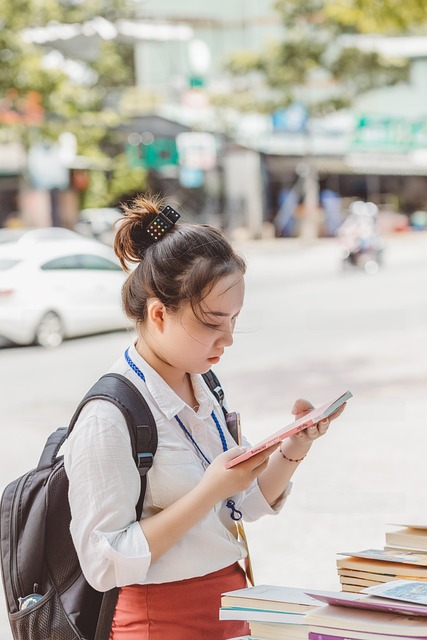Balancing social life involves mastering privacy settings to control content visibility, setting boundaries, and managing time on platforms. Regularly reviewing security measures and sharing practices is crucial for protecting personal information while enjoying a vibrant yet disciplined digital social experience.
In today’s digital age, students navigate a complex landscape where their social lives intertwine with online platforms. This student guide aims to empower you to balance your social life while managing privacy effectively. We’ll explore essential strategies for understanding and customizing privacy settings on social media, setting healthy boundaries, fostering meaningful online relationships, and optimizing time spent on these platforms. Additionally, we’ll offer valuable tips to protect your personal information.
- Understanding Privacy Settings on Social Media
- Setting Boundaries: When to Say No
- Building Healthy Online Relationships
- Managing Time Spent on Social Platforms
- Protecting Personal Information: Tips and Tricks
Understanding Privacy Settings on Social Media

Social media platforms offer a plethora of privacy settings, allowing users to control who sees their content and how much information they share. It’s crucial for students to understand these settings as they navigate their social lives online. Start by reviewing the privacy options on each platform you use frequently—Facebook, Instagram, Twitter, etc. Most sites provide detailed guides explaining what each setting means. For instance, “Friends” typically limits content access to your personal network, while “Public” makes it visible to everyone.
Learning to balance social life and privacy is an art. Adjusting these settings regularly can help maintain a healthy digital presence. Remember that once something is posted online, it becomes part of your digital footprint. Therefore, take time to consider who you want to share specific content with and why. This mindful approach ensures a more fulfilling social media experience while keeping personal information secure.
Setting Boundaries: When to Say No

In navigating your student journey, balancing a vibrant social life and maintaining privacy is an art that requires setting clear boundaries. Know your limits and respect them—it’s okay to decline invitations when you need time alone for studying or personal recharge. Learning to say no is empowering; it ensures your commitments align with your well-being and goals.
When considering social engagements, assess your current workload, mental health, and personal preferences. Prioritize activities that energize you while politely declining those that might overwhelm you. Remember, a healthy balance involves active participation in social events when desired but also the courage to step back when necessary for a peaceful and productive life.
Building Healthy Online Relationships

In today’s digital era, managing your online relationships is a crucial part of maintaining a healthy balance between your social life and privacy. Building and nurturing meaningful connections should extend beyond the screen, but understanding how to navigate these interactions virtually is essential. Start by setting clear boundaries; decide what information you’re comfortable sharing and with whom. Regularly review your privacy settings on social media platforms to control who can access your posts and personal details.
Encourage open communication with friends both online and offline. Foster a culture of respect, consent, and understanding when sharing content or engaging in discussions. Remember that digital interactions have real-world implications; be mindful of how your online behavior might impact your relationships and personal brand. Balancing social life involves recognizing the power of virtual connections while ensuring they contribute positively to your overall well-being.
Managing Time Spent on Social Platforms

In today’s digital era, managing time spent on social platforms is a crucial aspect of balancing social life. Students often find themselves immersed in a world of endless scrolls and notifications, which can significantly impact their academic performance and mental well-being. To strike a healthy balance, it’s essential to set clear boundaries. Allocate specific times during the day for checking social media, treating these as scheduled breaks rather than constant distractions. Utilize apps that track your usage, helping you become more aware of how much time you’re spending online.
Additionally, prioritize tasks and activities that require focus and concentration outside of social media platforms. Engage in hobbies, study groups, or physical activities that don’t involve screens. By creating a structured routine and engaging in meaningful offline experiences, students can reduce the urge to constantly check their devices, fostering a healthier relationship with technology and allowing for a more balanced social life.
Protecting Personal Information: Tips and Tricks

In today’s digital age, protecting personal information is a crucial aspect of managing your social life and maintaining a healthy balance. One of the first steps to securing your privacy is being mindful of what you share online. Be cautious when posting sensitive details such as full addresses, phone numbers, or financial information on social media platforms. Regularly review and update your privacy settings to limit access to your personal data.
Consider using unique and strong passwords for different accounts, enabling two-factor authentication where available, and being wary of suspicious emails or links that may compromise your security. Additionally, stay informed about the latest cybersecurity practices and regularly backup important files to protect against potential data breaches. By adopting these tips, you can ensure a safer online experience while still enjoying the benefits of connecting with friends through social media, ultimately facilitating a healthier balance between your social life and privacy.






